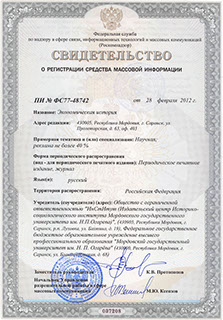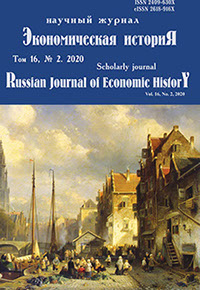Экономическая историЯ
Russian Journal of Economic History
ISSN 2409-630X (Print)
ISSN 2618-916X (Online)
Expert board:
- Scientific Council of RAS on economic history;
- Research and Educational Center «The economic history of Central Russia and the Middle Volga region» of Ogarev Mordovia State University;
- Center of Economic History of Lomonosov Moscow State University
Navigation
Certificate of registration

ISSN 2409-630X (Print), ISSN 2618-916X (Online)
DOI: 10.15507/2409-630X.049.016.202002.156-166
Ekaterina L. Furman1, Andrei V. Lunochkin2, Taisiya V. Yudina3
1 Volgograd State University (Volgograd, Russian Federation), e-mail: ekaterina.furman@volsu.ru
2 Volgograd State University (Volgograd, Russian Federation), e-mail: andrei.lunochkin@volsu.ru
3 Volgograd State University (Volgograd, Russian Federation), e-mail: taisia.yudina@volsu.ru
Stalingrad in the late 1920s – early 1930s: Population, Housing and Communal services, City Improvement
Introduction. The implementation of large-scale projects to improve Volgograd in modern conditions actualizes the appeal to the experience of modernization in the past years and, in particular, to the active transformation of the urban environment at the first stage of the socialist reconstruction of the national economy in Stalingrad. The article identifies a range of problems in the housing and communal sector and the welfare of the city, methods and conditions for their resolution. Materials and Methods. The study is based on both general scientific and concrete historical methods. In the process, the authors draw on unpublished sources storing in the fund documents representing the new and recent history of the Volgograd region and representing materials of paperwork documentation of local authorities. Results. In the late 1920s – early 1930s. Stalingrad survived the first stage of socialist reconstruction, during which a huge number of industrial enterprises appeared, which were reconstructed, new industrial facilities were launched – the flagships of the first five-year plan. Problems of development of housing and communal services, transport, the delivery of new tasks in the framework of urban improvement, which will operate during the 1930s systemically resolved. Conclusion. Despite the priority goals of industrial modernization, in the conditions of the rapid growth of the urban population, all the necessary resources were provided to the population of the city to expand the housing stock, develop communal services, and transport. Along with the development of industry, the problem of employment has been resolved.
Keywords: Stalingrad, industrialization, Lower Volga region, population, housing and communal services, improvement, transport.
Acknowledgements: The reported study was funded by RFBR and the government of Volgograd region according to the research project №19-49-340003 r_a «Stalingraders at the turning point of the era (mid-1920s – end of the 1930s): socio-economic situation and cultural life».
For citation: Furman E. L., Lunochkin A. V., Yudina N. V. Stalingrad in the late 1920s – early 1930s: population, housing and communal services, city improvement. Ekonomicheskaya istoriya = Russian Journal of Economic History. 2020; 16(2): 156–166. (In Russ.). DOI: 10.15507/2409-630X.049.016.202002.156-166.
© Ogarev Mordovia State University. History and Sociology Institute, 2017
68, Of. 411, Bolshevistskaya St., 430005, The editorial office of the scholarly journal «Russian Journal of Economic History»
Tel.: (8342) 24-25-90; 27-07-11, Fax: (8342) 24-25-90, E-mail: jurnal-econom-hist@isi.mrsu.ru
Designed by A. Napalkov, Email: napalkov@isi.mrsu.ru

